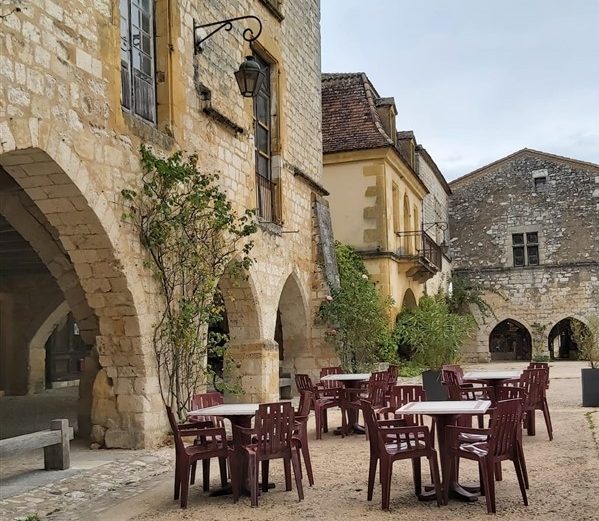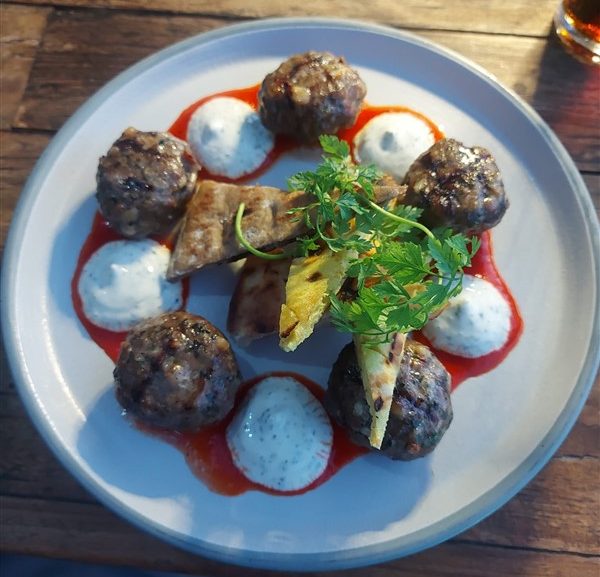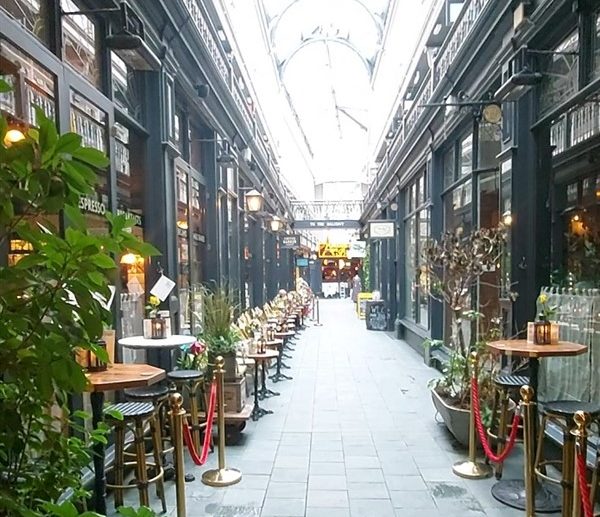Introduction
Indulging in new flavours and culinary adventures is one of the most captivating aspects of travel, and Europe is a continent that takes this experience to a whole new level. From the Mediterranean’s aromatic spices to the hearty fare of Central Europe, the continent boasts a rich tapestry of tastes that can tantalize even the most discerning palates. In this gastronomic journey, we’ll take you on a mouthwatering tour of the best foodie cities in Europe.
Whether you’re a devoted food enthusiast or simply someone with a penchant for exploring new cultures through their cuisine, this guide is your passport to discovering the most tantalizing dishes, traditional flavours, and hidden culinary gems that Europe has to offer.
1. Barcelona, Spain
Barcelona, Spain, is a gastronomic haven that entices foodies with its diverse and flavorful cuisine. Here’s a description of Barcelona from a foodie’s perspective:
- Tapas Culture: Barcelona is famous for its vibrant tapas culture. Explore the city’s tapas bars to savour a wide variety of small, flavorful dishes like patatas bravas (spicy potatoes), croquetas (croquettes), and pintxos.
- Seafood Sensations: As a coastal city, Barcelona offers an abundance of fresh seafood. Delight in dishes like paella, fideuà (noodle paella), and esqueixada (salted cod salad).
- Mercat de Sant Josep de la Boqueria: Visit the bustling Boqueria Market to experience a feast for the senses. Discover a kaleidoscope of fresh produce, seafood, meats, and local specialities.
- Catalan Cuisine: Barcelona is in the heart of Catalonia, and you can savour Catalan dishes like botifarra amb mongetes (sausage with white beans) and calcots (spring onions) in season.
- Vermouth: Enjoy a traditional vermouth aperitif in local bodegas and bars, often accompanied by olives and other tapas.
- Cava and Wine: Explore Catalonia’s renowned wine regions and sample local wines, including cava, a Spanish sparkling wine.
- Street Food: Barcelona boasts a thriving street food scene with food trucks and stalls offering a fusion of flavours from around the world.
- Churros and Chocolate: Satisfy your sweet tooth with churros and rich, velvety chocolate at traditional chocolaterías.
- Michelin-Starred Dining: Barcelona is home to numerous Michelin-starred restaurants, where you can experience exquisite and innovative Spanish cuisine.
- Catalan Desserts: Try classic Catalan desserts like crema catalana (similar to crème brûlée), panellets (marzipan sweets), and turrón (nougat).
Barcelona’s culinary scene reflects the city’s cultural diversity and culinary creativity. Whether you’re enjoying tapas in a bustling market, savouring a seafood feast by the beach, or indulging in Michelin-starred cuisine, Barcelona offers a wide range of flavours and experiences for food enthusiasts.
2. Bologna, Italy
Bologna, Italy, is a culinary paradise and a dream location for foodies. Known as “La Grassa” (The Fat One), the city is celebrated for its rich and flavorful cuisine. Here’s a description of Bologna from a foodie’s perspective:
- Bolognese Sauce: Taste the authentic ragù alla bolognese, the iconic meat sauce that originated in Bologna. It’s typically served with fresh tagliatelle pasta, creating a heavenly combination.
- Fresh Pasta: Bologna is famous for its handmade pasta. Don’t miss the opportunity to savour tortellini, lasagna, and other pasta dishes crafted with local expertise.
- Mortadella: Explore local markets and delis to sample the original mortadella, the inspiration for what many know as bologna sausage.
- Prosciutto and Parmigiano: Bologna is surrounded by the Emilia-Romagna region, known for its prosciutto di Parma and Parmigiano-Reggiano. Savour these delicacies alongside fresh, crusty bread.
- Balsamic Vinegar: Visit nearby Modena to taste traditional balsamic vinegar, a sweet and tangy condiment that elevates many dishes.
- Piadina: Try the regional flatbread called piadina, often filled with prosciutto, cheese, and greens, for a quick and satisfying snack.
- Osterias and Trattorias: Bologna is dotted with charming osterias and trattorias, where you can enjoy authentic local cuisine in a cosy and welcoming atmosphere.
- Tiramisu and Gelato: Satisfy your sweet tooth with classic Italian desserts like tiramisu and gelato from the city’s gelaterias and pastry shops.
- Local Wine: Pair your meals with wines from the nearby Emilia-Romagna vineyards, known for varieties like Lambrusco and Sangiovese.
- Food Tours and Cooking Classes: Join guided food tours and cooking classes to immerse yourself in the art of Bolognese cuisine, from market visits to hands-on pasta-making experiences.
Bologna is a food lover’s paradise and one of the best foodie cities in Europe, offering a tantalising array of flavours and traditional dishes that celebrate the rich culinary heritage of the region. Whether you’re dining in a quaint trattoria or exploring local markets, the city is a true Epicurean delight.
3. Copenhagen, Denmark
Copenhagen, Denmark, is a rising star in the culinary world and a fantastic destination for foodies. Here’s a brief description of Copenhagen from a foodie’s perspective:
- New Nordic Cuisine: Copenhagen is at the forefront of the New Nordic cuisine movement, emphasizing locally sourced, seasonal ingredients. Explore restaurants like Noma, which has held the title of the world’s best restaurant, and other innovative establishments that showcase the flavours of Denmark.
- Smørrebrød: Try smørrebrød, traditional Danish open-faced sandwiches, which feature rye bread topped with a variety of toppings like herring, gravlax, roast beef, and pickled vegetables. These sandwiches are an art form in themselves.
- Danish Pastries: Enjoy an array of delectable Danish pastries, including the iconic wienerbrød (Danish pastry), as well as kanelsnegle (cinnamon rolls) and hindbærsnitter (raspberry slices).
- Seafood: As a coastal city, Copenhagen offers an abundance of fresh seafood. Savour dishes like stegt flæsk (crispy pork belly), fiskefrikadeller (fish cakes), and a wide variety of herring preparations.
- Street Food Markets: Explore the vibrant street food markets, like Papirøen (Paper Island) and Reffen, for a diverse selection of international and Danish street food options.
- Craft Beer: Denmark has a thriving craft beer scene, and Copenhagen is home to many craft breweries and bars where you can sample a wide range of local brews.
- Coffee Culture: Copenhagen boasts a strong coffee culture, and you can find excellent speciality coffee shops serving a variety of brews and espresso-based drinks.
- Traditional Danish Dinners: Dine in cozy and historic restaurants for a traditional Danish dinner featuring classics like høns i asparges (chicken in asparagus), tarteletter (cream-filled pastry shells), and frikadeller (Danish meatballs).
- Open-Air Markets: Visit food markets such as Torvehallerne and farmers’ markets to taste locally grown produce, artisanal cheeses, and more.
Copenhagen’s food scene is a fusion of rich Danish traditions and a forward-thinking approach to cuisine. It’s a city that continuously pushes culinary boundaries, making it an exciting location for food enthusiasts looking to savour innovative Nordic flavours.
4. Athens, Greece
Athens, Greece, is fantastic for foodies, offering a delectable culinary experience deeply rooted in Greek traditions and Mediterranean flavours. Here’s a brief description of Athens from a foodie’s perspective:
- Greek Meze: Begin your culinary journey with Greek Meze, small dishes ideal for sharing, which include favourites like tzatziki, taramasalata, and melitzanosalata (eggplant dip), served with warm pita bread.
- Souvlaki and Gyros: Savor the iconic Greek street food with souvlaki (skewered and grilled meat) and gyros (rotisserie meat, typically pork or chicken) wrapped in pita bread and topped with fresh vegetables and tzatziki sauce.
- Fresh Seafood: Being located near the Mediterranean Sea, Athens offers a wide variety of fresh seafood. Enjoy grilled fish, octopus, calamari, and traditional Greek dishes like psarosoupa (fish soup).
- Greek Salad: Taste the quintessential Greek salad, known as horiatiki, consisting of fresh tomatoes, cucumbers, olives, feta cheese, and drizzled with olive oil and oregano.
- Moussaka and Pastitsio: Delight in classic Greek casseroles like moussaka (layered eggplant or potato with meat and béchamel) and pastitsio (a baked pasta dish with meat and béchamel sauce).
- Baklava and Loukoumades: Indulge in sweet treats like baklava (layers of filo pastry, nuts, and honey) and loukoumades (Greek doughnuts soaked in honey and sprinkled with cinnamon and nuts).
- Traditional Tavernas: Experience the warm and lively atmosphere of traditional Greek tavernas, where you can enjoy authentic dishes and often listen to live music or enjoy plate-smashing dances.
- Greek Wine and Ouzo: Sample local Greek wines and ouzo, the anise-flavoured aperitif, at cosy wine bars and tavernas.
- Greek Coffee: Sip on a strong Greek coffee, a traditional way to end a meal or relax in a café.
- Local Markets: Explore Athens’ central markets like Varvakios and Evripidou for fresh produce, spices, cheeses, and other culinary treasures.
Athens’ culinary scene beautifully combines ancient traditions with modern flavours, making it a captivating destination for food enthusiasts looking to savour Greek cuisine and Mediterranean delights.

5. Lyon, France
Lyon, France, is a true culinary mecca and a haven for foodies, renowned for its rich gastronomic heritage and world-class cuisine. Here’s a brief description of Lyon from a foodie’s perspective:
- Bouchons: Lyon is famous for its bouchons, traditional and cosy restaurants that serve hearty, home-cooked Lyonnais cuisine. Indulge in dishes like quenelles (fish dumplings), andouillette (sausage), and coq au vin, all paired with local wines.
- Les Halles de Lyon: Visit this bustling indoor food market, also known as the Paul Bocuse Market, to explore a wide variety of gourmet products, fresh produce, cheeses, charcuterie, and more. It’s a paradise for food enthusiasts.
- Silk Weavers’ Quarter: In Croix-Rousse, you’ll find quaint cafés and boulangeries that serve delicious pastries like praline tarts, pain aux noix (nut bread), and other sweet treats.
- Fromage Heaven: Lyon is surrounded by dairy-rich regions, making it a cheese lover’s dream. Savour a cheese platter with local varieties like Saint-Marcellin, Crottin de Chavignol, and the pungent St. Nectaire.
- Michelin Stars: Lyon is home to numerous Michelin-starred restaurants, where you can experience haute cuisine and innovative dining. Be sure to book a table in advance for an unforgettable gourmet experience.
- Wine Tasting: Lyon is situated in the heart of the Rhône Valley wine region. Enjoy wine tasting tours in nearby vineyards to sample Côtes du Rhône, Beaujolais, and other exceptional French wines.
- Les Halles Bocuse: This gourmet food market is a food lover’s paradise, offering the finest regional and international delicacies, from charcuterie to chocolates.
- Culinary Festivals: Time your visit with food festivals like Les Nuits Sonores and Les Nuits de Fourvière, which combine music, arts, and delicious food for a memorable experience.
Lyon’s culinary scene is steeped in tradition and innovation, offering a diverse range of flavours and dining experiences. Whether you prefer traditional Lyonnais cuisine or Michelin-starred dining, Lyon has something to satisfy every foodie’s palate.
6. Amsterdam, Netherlands
Amsterdam, in the Netherlands, offers a diverse and exciting culinary landscape for foodies. Here’s a brief description of Amsterdam from a foodie’s perspective:
- Dutch Snacks: Embrace Dutch snacking culture by trying iconic treats like bitterballen (deep-fried meat-based snacks), kroketten (croquettes), and Dutch herring, often enjoyed from street food vendors.
- Stroopwafels: Savor freshly baked stroopwafels, thin waffle cookies with a caramel-like syrup filling, a popular Dutch sweet treat.
- Indonesian Cuisine: Amsterdam’s colonial history has left a strong influence from Indonesia. Indulge in rijsttafel, a traditional Indonesian feast of small dishes, as well as satay and rendang, at Indonesian restaurants across the city.
- Cheese Tasting: Explore the city’s cheese shops and markets to sample Dutch cheeses, including Gouda, Edam, and Leyden, and learn about their production.
- Poffertjes: Enjoy poffertjes, small fluffy pancakes often served with powdered sugar and butter, at pancake houses and street food stalls.
- Canalside Dining: Dine at picturesque canalside restaurants and cafés for a unique experience, while enjoying Dutch specialties like pea soup (erwtensoep) or Dutch pancakes (pannenkoeken).
- Food Markets: Discover vibrant food markets like the Albert Cuyp Market, where you can taste a variety of international and Dutch street foods, including herring sandwiches and fresh stroopwafels.
- Michelin-Starred Restaurants: Amsterdam boasts a growing number of Michelin-starred restaurants for those seeking gourmet experiences and innovative Dutch cuisine.
- Craft Beer Scene: Explore Amsterdam’s burgeoning craft beer scene with a visit to local breweries and taprooms, offering a wide range of artisanal brews.
- Surinamese and Turkish Flavors: Sample delicious Surinamese and Turkish dishes, such as roti, kebabs, and börek, available at restaurants and takeout spots throughout the city.
Amsterdam’s food scene combines traditional Dutch fare with a cosmopolitan twist, providing a delightful array of flavours and dining experiences for food enthusiasts.
7. Krakow, Poland
Krakow, Poland, is a great city for foodies, offering a rich and diverse culinary experience rooted in Polish traditions and influenced by its history and culture. Here’s a brief description of Krakow from a foodie’s perspective:
- Pierogi Paradise: Krakow is famous for its pierogi, which are delicious dumplings stuffed with a variety of fillings such as potato and cheese, mushrooms, meat, or fruits for sweet pierogi. These dumplings can be found in traditional restaurants, local markets, and street food stalls.
- Traditional Polish Cuisine: Sample traditional Polish dishes like bigos (hunter’s stew), kielbasa (sausage), and gołąbki (stuffed cabbage rolls). These hearty and flavorful dishes are a must-try to experience the essence of Polish comfort food.
- Street Food Delights: Krakow’s street food scene is vibrant. You can enjoy grilled oscypek (smoked cheese), zapiekanki (open-faced sandwiches), and obwarzanki (a type of pretzel) from street vendors and stalls throughout the city.
- Milk Bars (Bar Mleczny): Explore the city’s milk bars, which are inexpensive and traditional canteens serving affordable Polish comfort food. They offer a taste of the past and are great places to savour classics like pierogi, barszcz (beet soup), and placki ziemniaczane (potato pancakes).
- Dessert Delights: Krakow is known for its sweet treats. Be sure to try szarlotka (apple pie), makowiec (poppy seed cake), and, of course, the famous Polish doughnuts called pączki.
- International Flavors: Krakow also has a burgeoning international food scene, with restaurants offering diverse cuisines, from Italian and Mexican to Japanese and Middle Eastern, catering to a wide range of tastes.
- Craft Beer and Vodka: Poland has a strong tradition of brewing and distilling. Enjoy locally crafted beers and sample Polish vodkas, which come in a variety of flavours.
In Krakow, you can explore the city’s rich culinary heritage while indulging in a wide range of flavors and dishes, making it a superb place for food enthusiasts.
8. Lisbon, Portugal
Lisbon, Portugal, is a paradise for foodies, offering a diverse and delectable culinary experience that combines traditional Portuguese flavours with international influences. Here’s a brief description of why Lisbon is a one of the leading foodie cities in Europe:
- Seafood Extravaganza: Lisbon’s proximity to the Atlantic Ocean means an abundance of fresh seafood. Try dishes like bacalhau à brás (salted cod with eggs and potatoes), grilled sardines, and arroz de marisco (seafood rice) at local restaurants and seafood markets.
- Pastéis de Nata: These creamy, custard-filled pastries are an iconic Portuguese treat. Be sure to sample them at the famous Pastéis de Belém bakery or various pastelarias (pastry shops) throughout the city.
- Portuguese Tascas: Explore traditional tascas, small taverns or eateries, where you can savour petiscos (Portuguese tapas). These small plates include favourites like bifana (pork sandwich), chouriço assado (grilled chorizo), and various kinds of cheese and cured meats.
- Mercado da Ribeira: Visit the Time Out Market in Cais do Sodré, a bustling food hall featuring stalls from some of Lisbon’s top chefs and restaurants, offering a wide range of culinary delights.
- Fado and Food: Experience the unique combination of traditional Fado music and dining in Lisbon’s historic neighbourhoods like Alfama. Many Fado houses offer dinner and live music, creating a memorable cultural and culinary experience.
- Wine and Port Tasting: Portugal is renowned for its wines, and Lisbon is a great place to taste both local wines and the world-famous Port wine. Explore wine bars, cellars, and wine shops to discover a wide selection of Portuguese vintages.
- International Flavors: Lisbon’s international food scene is vibrant, with a variety of restaurants serving cuisines from around the world, including Indian, Japanese, and Brazilian, offering diverse dining options.
- Hidden Gems: Seek out local, family-run restaurants and hidden gems in Lisbon’s neighbourhoods to discover authentic and flavorful Portuguese dishes.
Lisbon’s culinary landscape is a reflection of its diverse history and cultural influences, making it one of the must-visit foodie cities for food enthusiasts eager to savour traditional Portuguese dishes and explore a variety of flavours and dining experiences.
9. Istanbul, Turkey
Istanbul, Turkey, is a culinary treasure trove for foodies, offering a rich and diverse gastronomic experience that spans centuries of history and cultural influences. Here’s a brief description of Istanbul from a foodie’s perspective:
- Street Food Delights: Istanbul is renowned for its vibrant street food scene. Sample mouthwatering treats like simit (sesame-crusted bread rings), midye dolma (stuffed mussels), and döner kebab from food stalls and vendors scattered throughout the city.
- Meze Madness: Turkish cuisine features an array of meze, and small dishes that are perfect for sharing. Try classics like hummus, baba ghanoush, and cacık (tzatziki) accompanied by freshly baked pide bread.
- Kebabs Galore: Istanbul is the place to indulge in a wide variety of kebabs, from Adana kebab with spicy minced meat to iskender kebab with sliced lamb, all served with fragrant rice, vegetables, and yoghurt.
- Bountiful Bazaars: Explore the city’s bustling markets, including the Grand Bazaar and the Spice Bazaar, to discover an array of spices, dried fruits, nuts, and Turkish delight. These markets are perfect for food enthusiasts looking for culinary souvenirs.
- Seafood Feasts: Being situated along the Bosphorus, Istanbul offers an abundance of fresh seafood. Enjoy grilled fish, balık ekmek (fish sandwiches), and delectable seafood meze in waterfront restaurants.
- Sweets and Desserts: Satisfy your sweet tooth with baklava, Turkish delight, künefe, and other delectable pastries. Don’t forget to try Turkish coffee, a strong and aromatic beverage often served with a side of lokum (Turkish delight).
- Breakfast Bliss: Experience a traditional Turkish breakfast, known as kahvaltı, featuring a spread of olives, cheeses, tomatoes, cucumbers, and freshly baked bread, often accompanied by honey and jams.
- Turkish Delicacies: Seek out authentic Turkish dishes like manti (tiny dumplings), imam bayildi (stuffed eggplant), and menemen (scrambled eggs with tomatoes and spices).
- Historic Dining: Dine in historic settings such as traditional Ottoman-era restaurants where you can savor centuries-old recipes in an atmospheric and cultural ambience.
Istanbul’s culinary scene is a testament to the city’s rich history and the diverse influences that have shaped its cuisine. From street food to elegant dining, Istanbul offers a delightful array of flavours and experiences making it one of the top foodie cities in Europe.

10. Munich, Bavaria
Munich, the capital of Bavaria in Germany, is a delightful city for foodies, offering a blend of hearty traditional German fare and international influences. Here’s a brief description of Munich from a foodie’s perspective:
- Bavarian Classics: Indulge in hearty Bavarian dishes like weißwurst (white sausage), pretzels, and sauerkraut, often enjoyed with sweet mustard and a glass of wheat beer.
- Beer Gardens: Munich is famous for its beer gardens, where you can savour a variety of Bavarian brews and pair them with classic dishes like schnitzel and roast chicken.
- Oktoberfest: If you visit during the world-famous Oktoberfest, you can sample a vast selection of German beers, sausages, roasted almonds, and giant pretzels.
- Roast Pork: Try the local speciality, schweinshaxe (roasted pork knuckle), with crispy skin and tender meat, typically served with potato dumplings and red cabbage.
- Sausages: Munich is known for its sausage culture. Don’t miss the traditional Munich sausages, such as bratwurst and knackwurst, served in various styles.
- Beer Halls: Experience the lively atmosphere of traditional beer halls like Hofbräuhaus and Augustiner-Keller, where you can enjoy communal dining and live music.
- International Flavors: Munich offers a wide range of international cuisine, from Italian and Asian to Middle Eastern and more, catering to diverse tastes.
- Coffee and Cake: Enjoy the tradition of Kaffee und Kuchen (coffee and cake) in Munich’s historic cafes, savouring indulgent cakes like Black Forest gateau and apple strudel.
- Street Food: Explore the city’s street food markets and stalls offering dishes from around the world, as well as local specialities like Leberkäse (meatloaf).
- Bavarian Cream: Satisfy your sweet tooth with Bavarian cream desserts like cremeschnitte and bavarois, often found in pastry shops and cafes.
Munich’s food scene beautifully combines Bavarian traditions with international flavours, making it one of the best foodie cities for food enthusiasts looking to savour traditional German dishes and explore a variety of culinary experiences.
Summary
In summary, the best foodie cities in Europe invite you to embark on an epicurean voyage across the continent, where every dish tells a story and every meal is a journey through history and culture. From the sun-soaked flavours of the Mediterranean to the hearty comforts of Central Europe, and the innovative kitchens of the North, Europe’s diverse culinary landscape is a treasure trove of delights for all food enthusiasts.
Whether you’re a connoisseur of traditional dishes, a seeker of street food thrills, or someone who simply revels in the joy of tasting new flavours, these cities promise a gastronomic adventure like no other. So, pack your appetite and embark on a culinary tour of Europe, where each bite is a step closer to unravelling the heart and soul of a region’s unique food culture.










